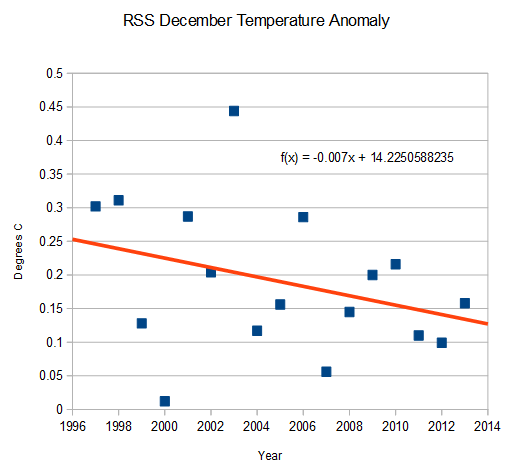Ojmjakon, Russia averaged -36ºF in December. Washington Post says that was hot.
Europe and Russia were much hotter than average.
Can global warming be real if it’s cold in the U.S.? Um… yes!
They also said that satellite data showed December as 2nd hottest on record
Early data suggests that December 2013 was tied for the 2nd-hottest December on record since 1979, the beginning of satellite measurements
RSS was 11th warmest since 1979 (close to the median) and UAH was seventh warmest.



Shock news: Great storms destroy Welsh farms, buildings, church’s and pubs! – Dec 1886
http://trove.nla.gov.au/ndp/del/article/72957700
Shock news: French fishermen experience “worst storm in living memory!” 10 January, 1924.
http://trove.nla.gov.au/ndp/del/article/119198663
Shock news: Warm Mongers know they are lying and don’t need us to remind them. When they “wink wink” at the other environmental retards, and you get the urge to tell them they are lying, don’t bother…how about you go up to Al Capone and tell him he’s a gangster. How about you go up to mafia don and tell him to pay his hit men,
Arctic Vortex heading for Moscow.
http://www.woeurope.eu/weather/maps/forecastmaps?LANG=eu&UP=0&R=0&MORE=1&MAPS=vtx&CONT=euro&LAND=__&ZEIT=201401080647&LOOP=1
The global warming nuts are spinning like mad tops.
well, considering average December temperature in Ojmjakon has been -53F then having -36F is certainly hot:
http://www.oymyakon.climatemps.com/december.php
I’m sure they are frying eggs on the pavement.
what would you do if your monthly average temperature would be ~23 degrees higher than usual?
I suggest you take a camping trip in -36 degree weather for a few days, and then report back to us on what you figured out. Remember to bring ice, to protect yourself from the heat.
And that has something to do with climate change, how exactly?
I understand that you are obsessed with climate change, but this article is about temperature misinformation written in the Washington Post. Why do you think they were lying about satellite temperatures?
In that region, rejoyce.
Huh? How were they wrong, exactly? You do realize that even -36F can be considered hot when baseline is -53F?
Please go camping in -36 degree weather, and then tell us how hot it is.
“…..since 1979, the beginning of satellite measurements….
I keep wanting to shout ‘MORON’ at people who claim that this could possibly have any significance.
1979 was not the start of the Satellite Era”, not even the start of the Polar-orbiting Satellites era.
“POES History – Polar-orbiting Satellites: The First to be Launched
The world’s first meteorological satellite was launched from Cape Canaveral on April 1, 1960. Named TIROS for Television Infrared Observation Satellite, it demonstrated the advantage of mapping the Earth’s cloud cover from satellite altitudes. TIROS showed clouds banded and clustered in unexpected ways. Sightings from the surface had not prepared meteorologists for the interpretation of the cloud patterns that the view from an orbiting satellite would show.
From April 1, 1960 to July 2, 1965, ten TIROS satellites were launched. The satellites ensured continuity of data throughout the early years. The first four TIROS satellites had an inclination of 48 degrees and the next four had an inclination of 58 degrees, thus they were not polar-orbiting. The last two TIROS were the first polar-orbiting meteorological satellites. The next series of satellites, named ESSA (for Environmental Science Services Administration) were launched from February 3, 1966 to February 26, 1969. Nine satellites in the ESSA series were launched during this time. These satellites were also polar-orbiting satellites.
On January 23, 1970, the first of the improved satellites was launched. This satellite was named ITOS 1, for Improved TIROS Operational Satellite. Between December 11, 1970 and July 29, 1976. Five ITOS satellites designated NOAA-1 through 5 were launched. NOAA-1 was the first satellite to bear the NOAA name and the first to be launched after the establishment of NOAA in October 1970.
From October 13, 1978 to July 23, 1981, satellites in the TIROS-N series were launched. The N represented the next generation of operational satellites. NOAA-6 and NOAA-7 were launched during this time frame. Flight of the AVHRR (Advanced Very High Resolution Radiometer) and TIROS Operational Vertical Sounder suite started on TIROS-N.
On March 28, 1983, the first of the Advanced TIROS-N (or ATN) satellites designated NOAA-8 was launched. These satellites are physically larger and have more power than their predecessors to accommodate more equipment.”
http://www.ospo.noaa.gov/Organization/History/POES_history.html
It’s interesting; they’re not budging an inch yet. Although they have to disregard the fact that the Arctic isn’t actually warming like it should. (Details, details …)
It’s also interesting that, although the present conditions completely contradict what they were ‘predicting’ (i.e. claiming would happen) just a few years ago, they don’t appear to be fazed in the slightest. They still carry on as if everything that’s happening is is perfect accord with AGW. But of course this gives the game away. As usual, their actions demonstrate the basic falseness of their position. To me this is one of the most interesting aspects of the who AGW episode.
Some places are hot, others are cold, but only Hansen’s red crayon knows for sure!